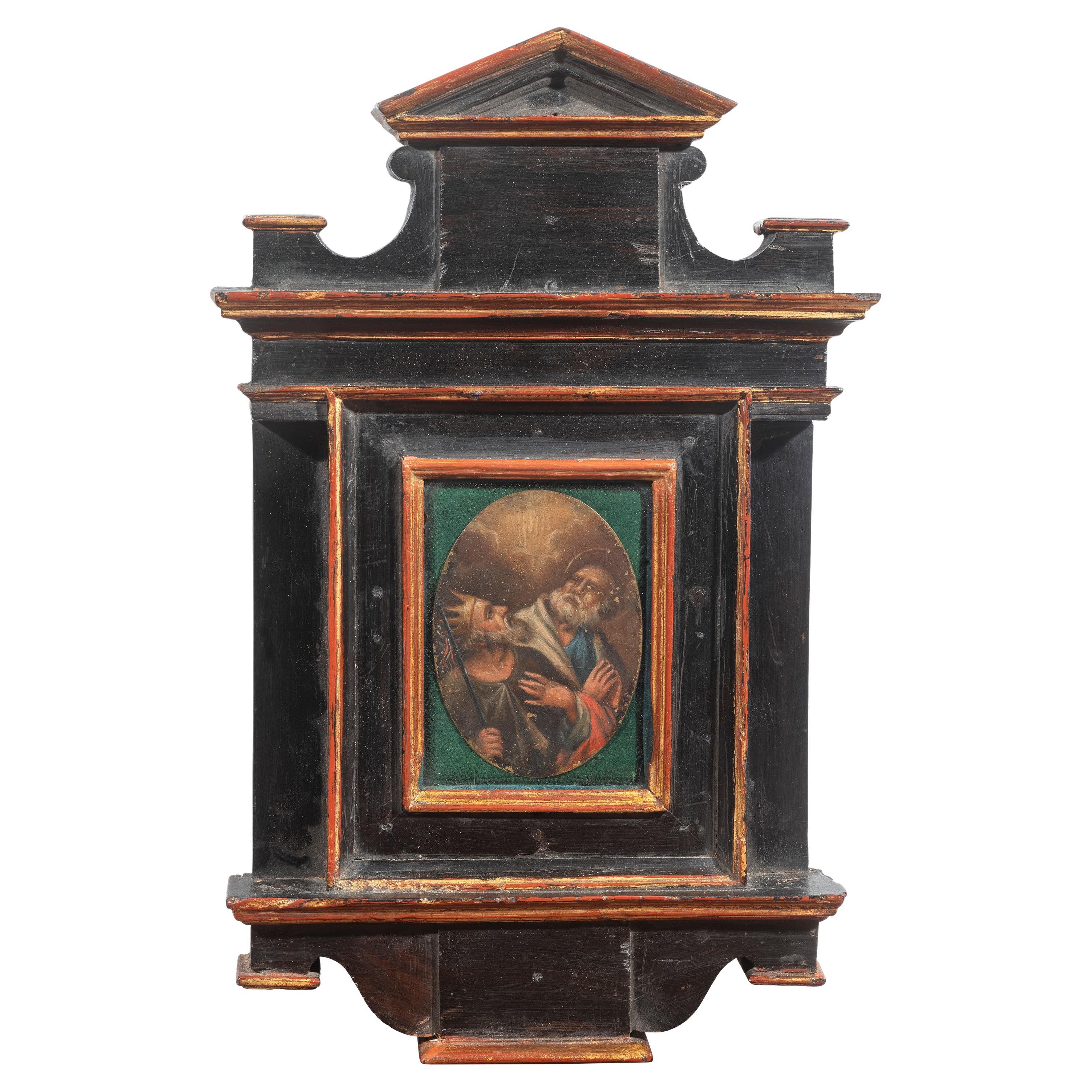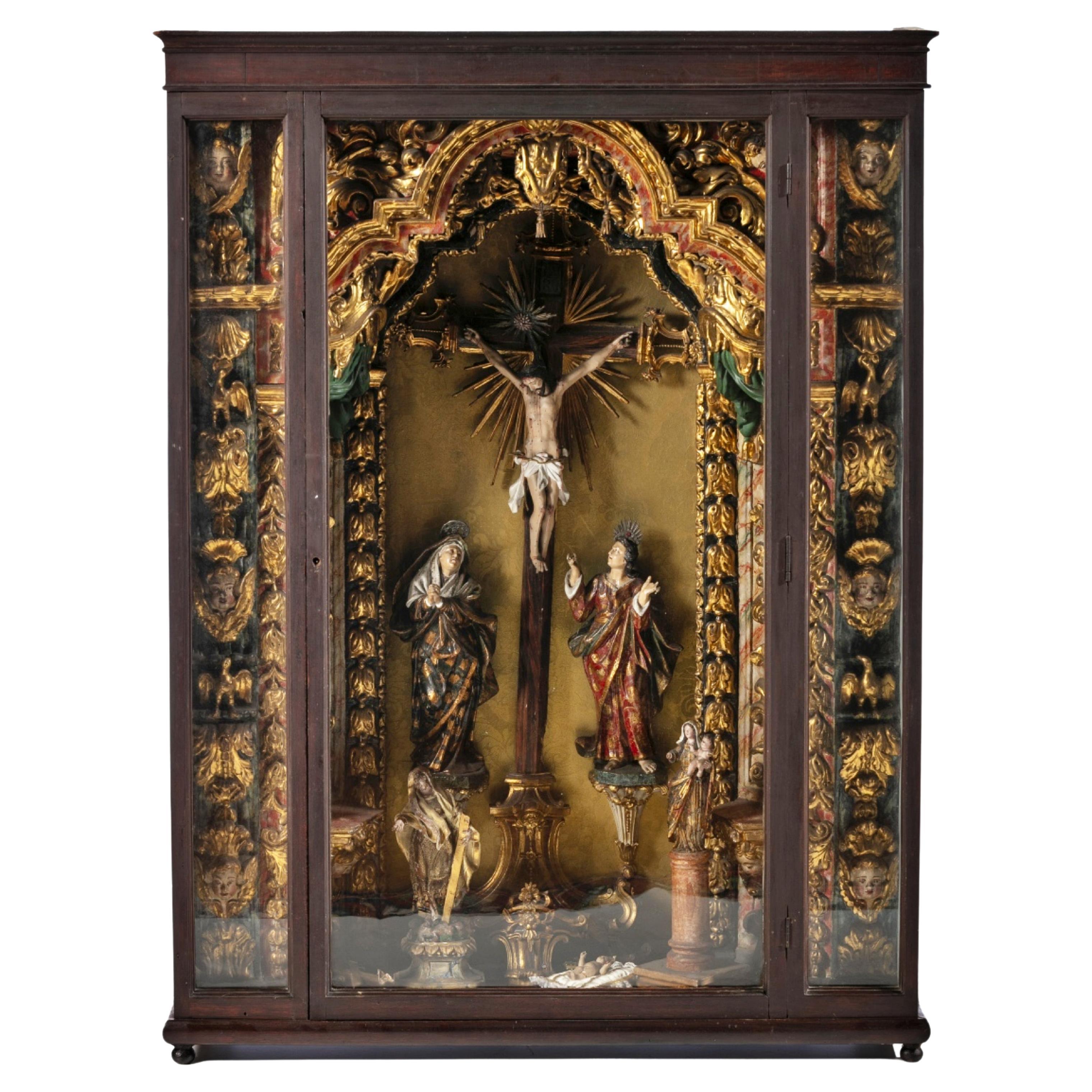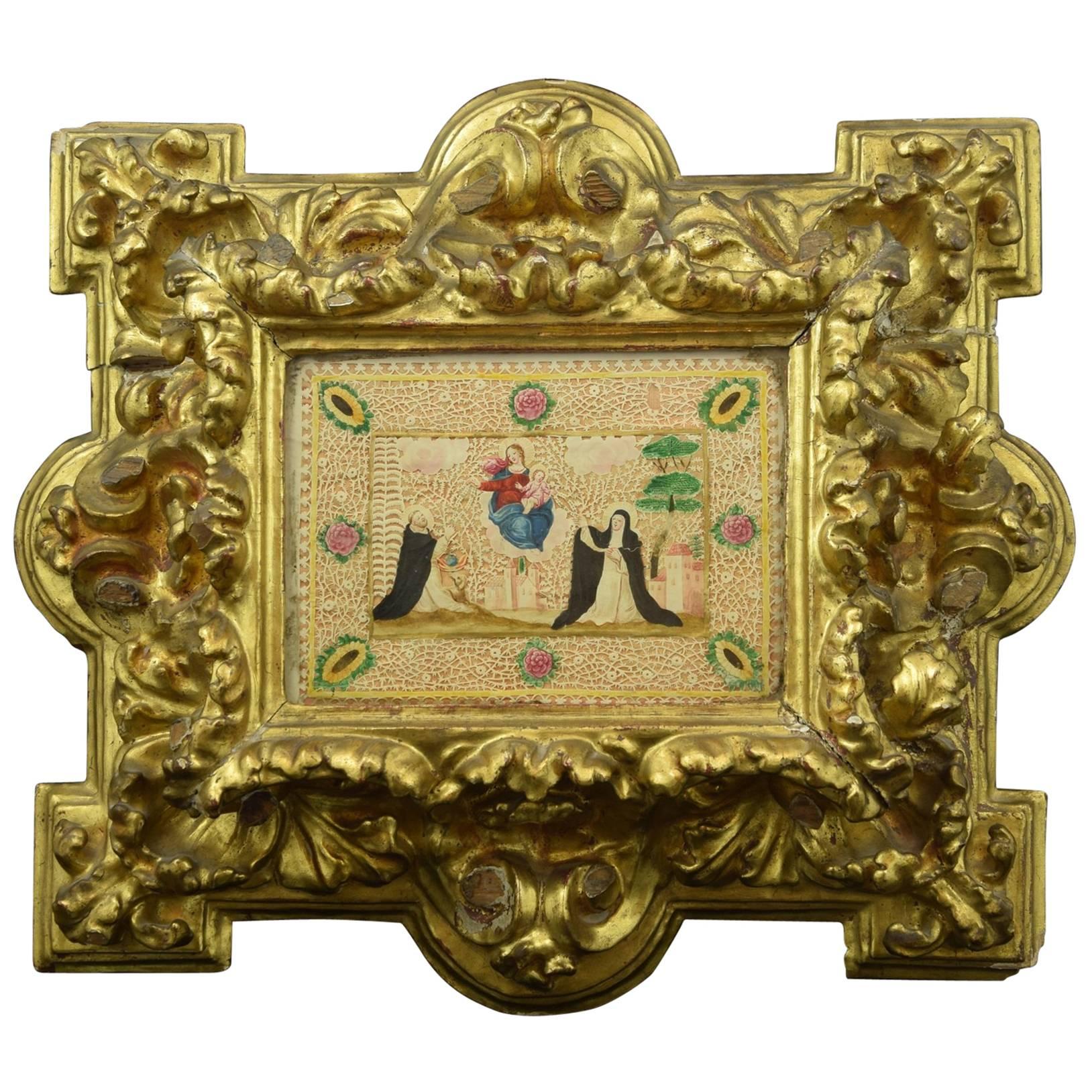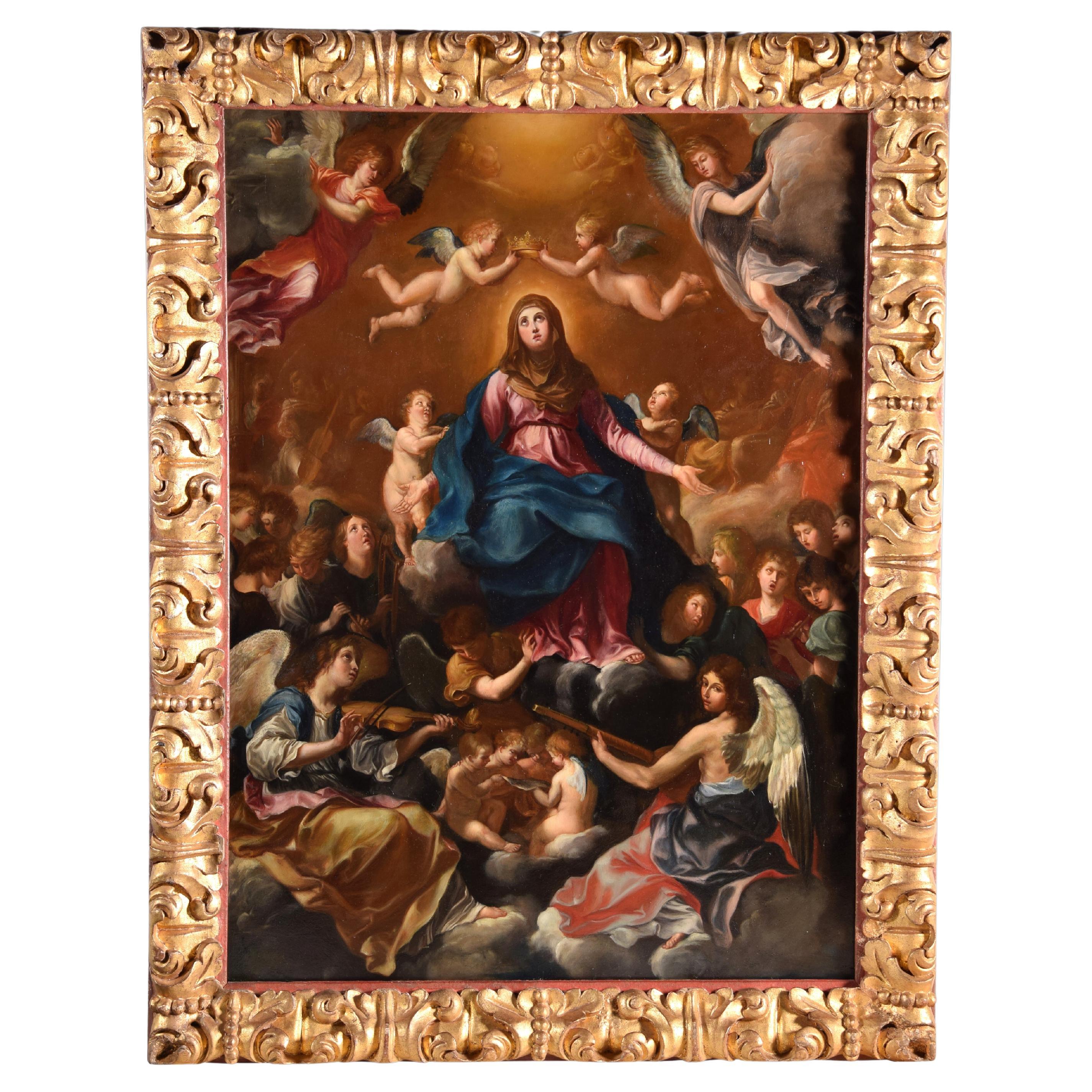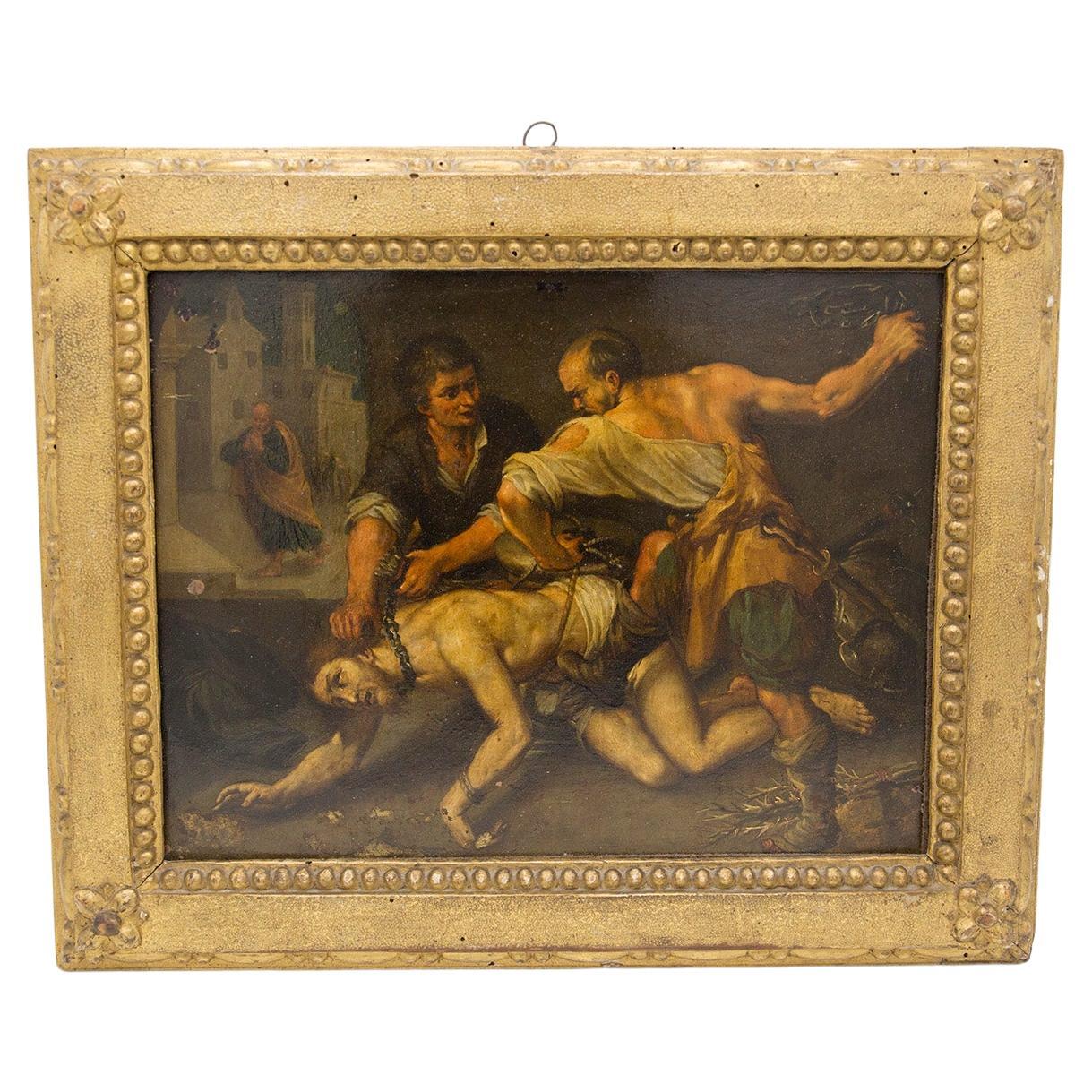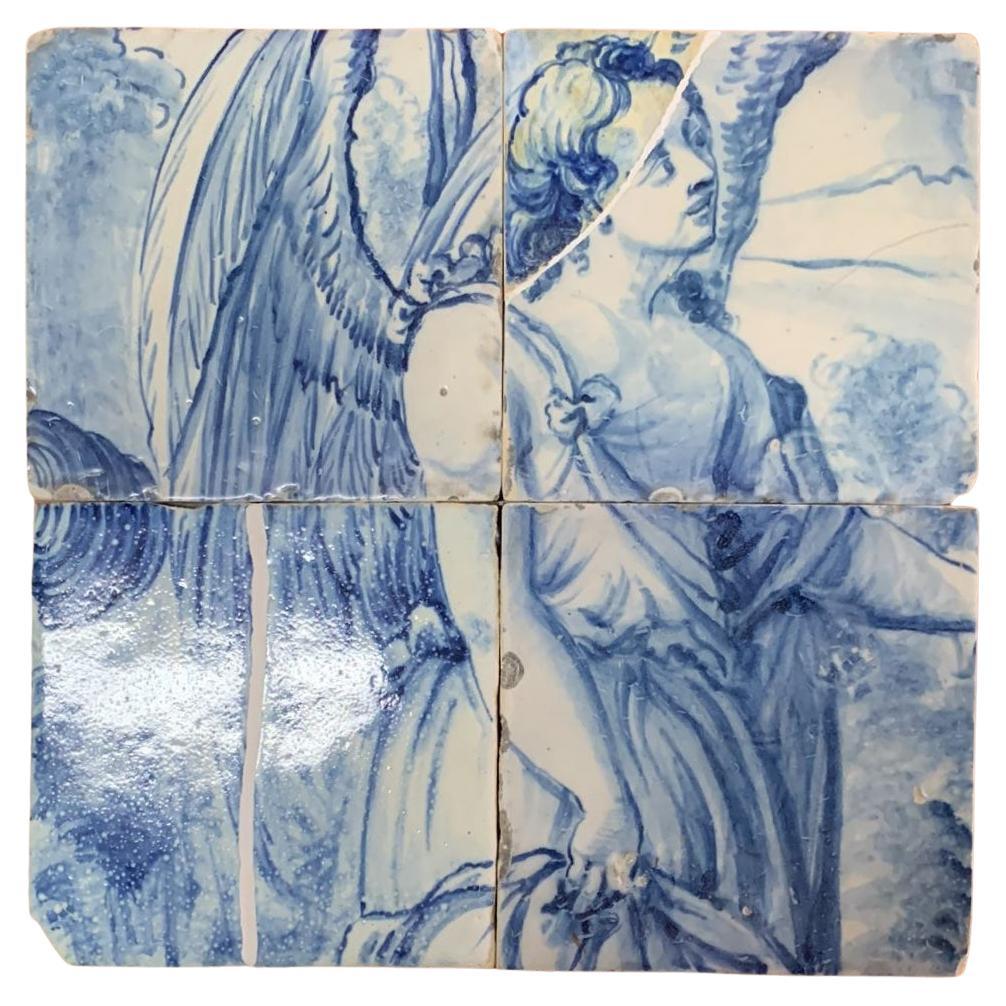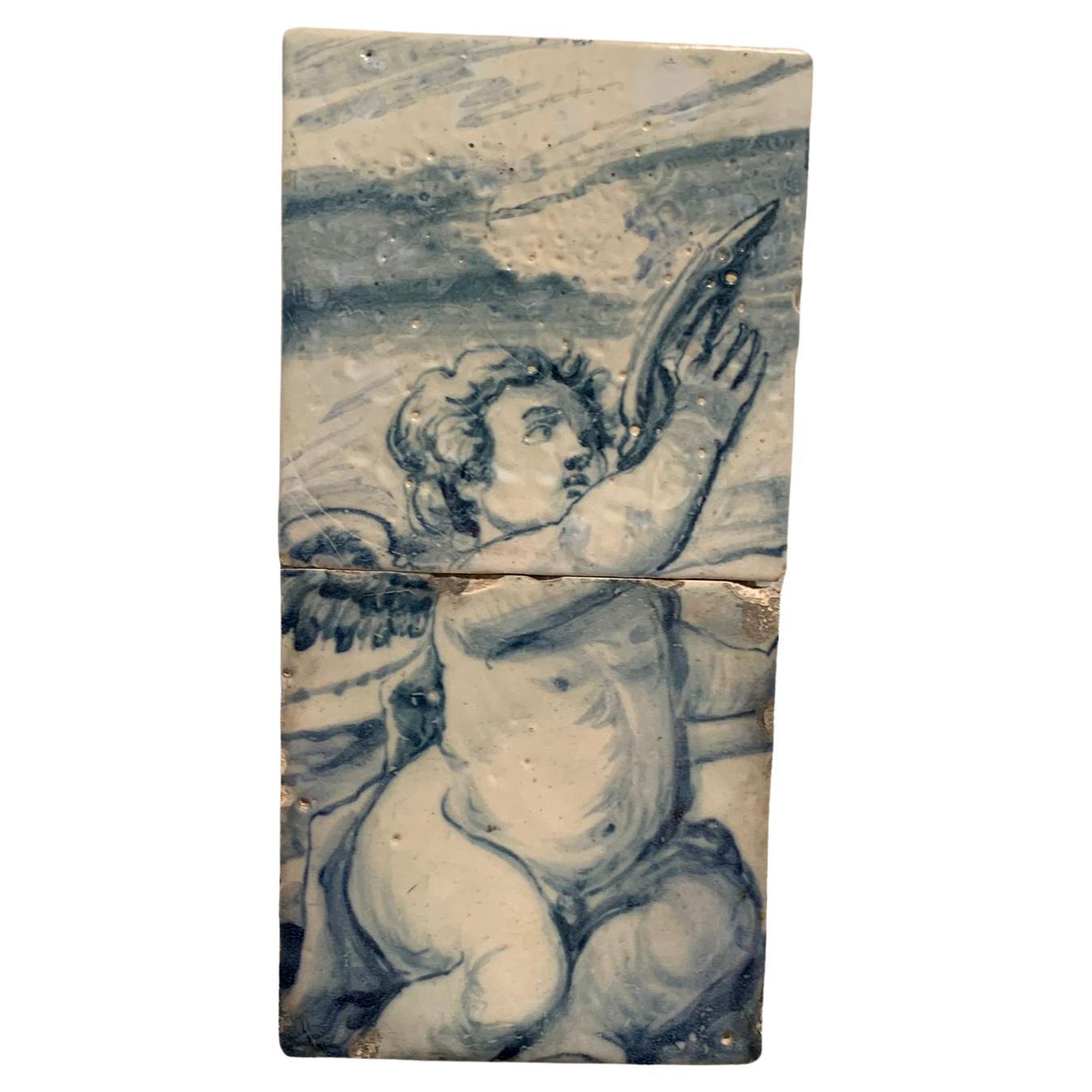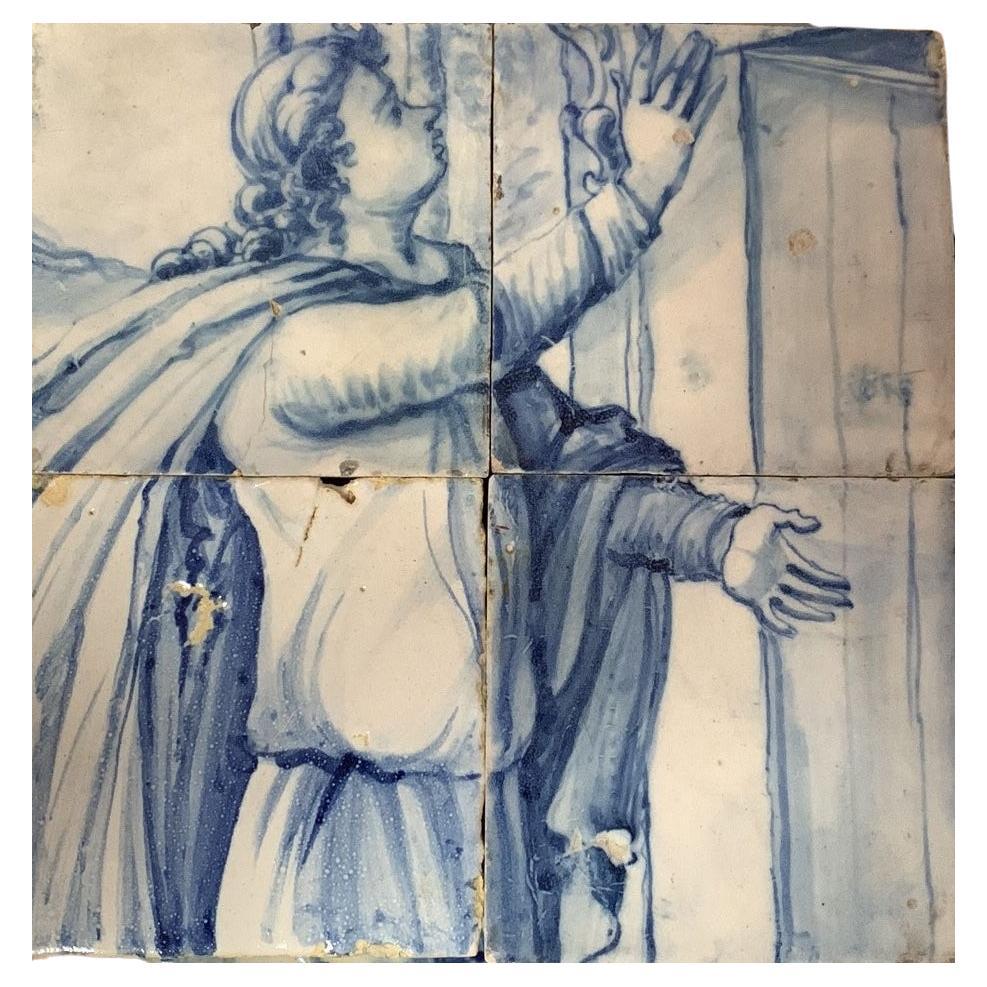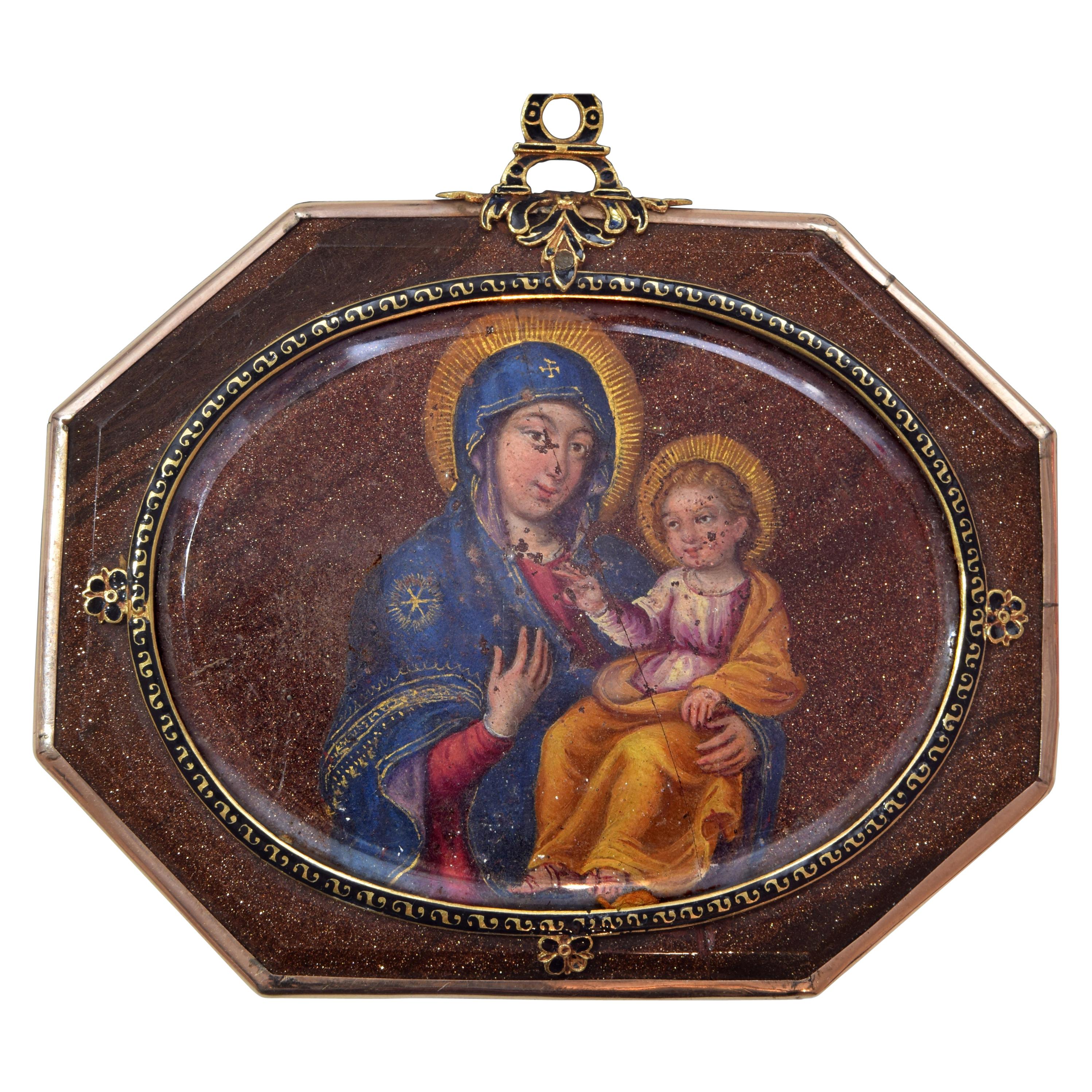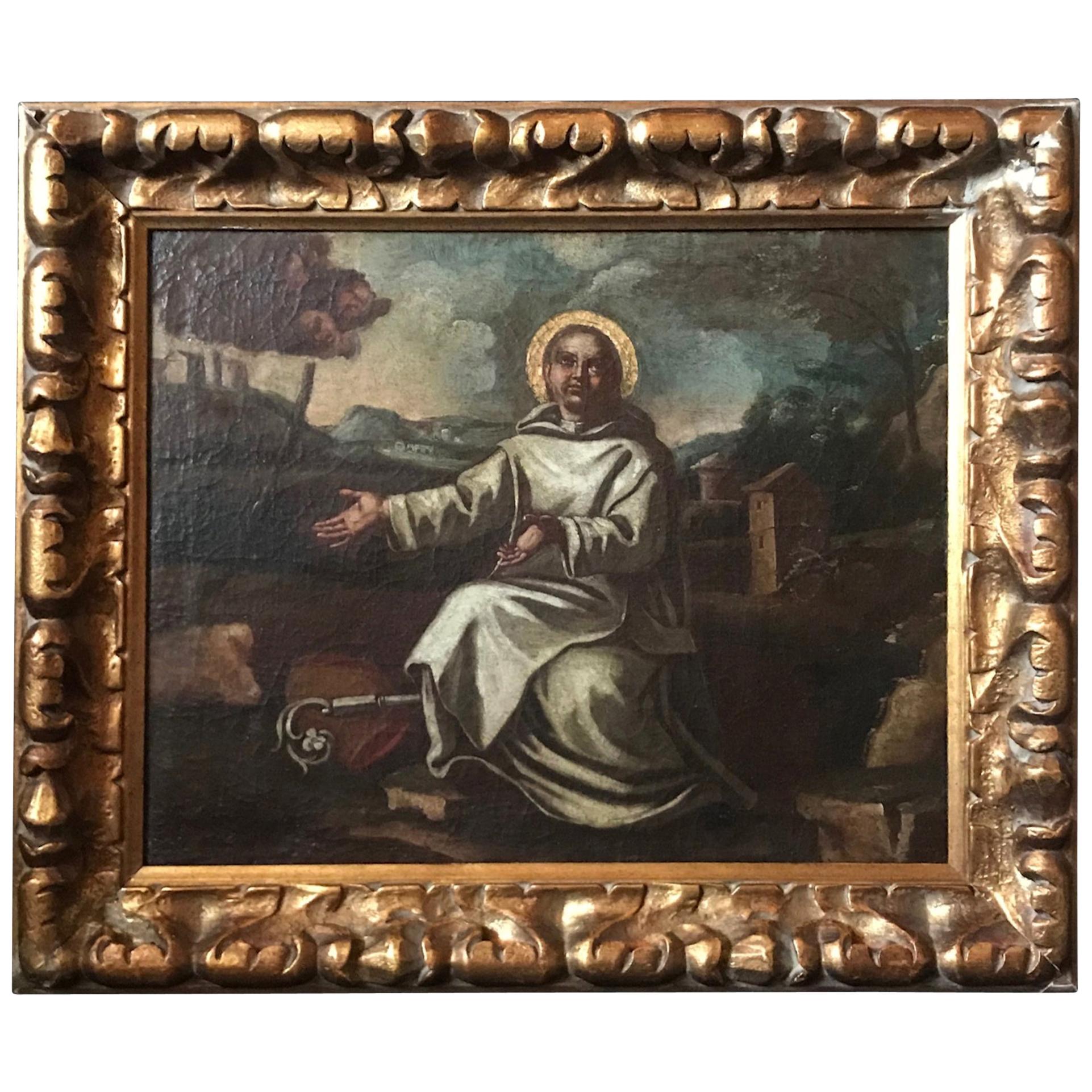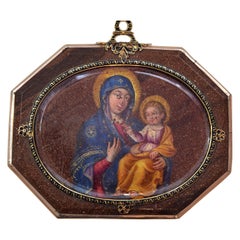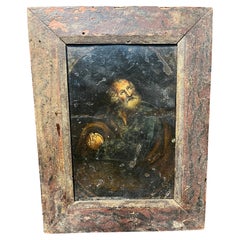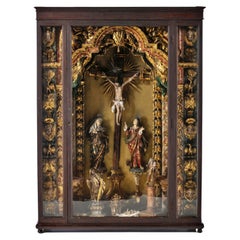
Saint Francis Oil on Copper with Important Frame, 17th Century
View Similar Items
Want more images or videos?
Request additional images or videos from the seller
1 of 16
Saint Francis Oil on Copper with Important Frame, 17th Century
About the Item
- Similar to:Ludovico Cardi (Artist)
- Dimensions:Height: 20.08 in (51 cm)Width: 18.12 in (46 cm)Depth: 3.15 in (8 cm)
- Style:Baroque (Of the Period)
- Materials and Techniques:
- Place of Origin:
- Period:
- Date of Manufacture:17th Century
- Condition:Refinished. Repaired. Wear consistent with age and use. Minor losses. Minor fading.
- Seller Location:Madrid, ES
- Reference Number:Seller: ZF04871stDibs: LU2951322528772
About the Seller
4.9
Vetted Seller
These experienced sellers undergo a comprehensive evaluation by our team of in-house experts.
Established in 1985
1stDibs seller since 2017
292 sales on 1stDibs
Typical response time: 16 hours
More From This SellerView All
- Frame with Vellum Painting, 17th CenturyLocated in Madrid, ESCarved and gilded frame with painting on vellum, "Virgin of the Rosary with Santo Domingo de Guzmán and Santa Catalina of Siena", 17th century. Registration in the back zone (Mr. Jos...Category
Antique 17th Century European Baroque Religious Items
MaterialsLeather, Wood, Paint
- Assumption of the Virgin Mary. Oil on Copper Possibly late 17th centuryBy Guido ReniLocated in Madrid, ESAssumption of the Virgin Mary. Oil on Copper Possibly late 17th century Following models by Guido Reni (Bologna, 1575-1642). Has faults. Oil on copper that shows the Virgin Mary seated on clouds...Category
Antique Late 17th Century Spanish Baroque Paintings
MaterialsCopper, Other
- Devotional Pendant, Oil on Aventurine, Gold, Enamel, Spain, 17th CenturyLocated in Madrid, ESDevotional pendant or reliquary. Oil painting on aventurine, enamel, gold. Spain, 17th century. Medallion or devotional pendant or reliquary made of aventurine or aventurine with an octagonal shape and faceted fronts, enhanced with a series of enamels combining black and gold, which protect two oil paintings with a Catholic Christian religious theme, located one on each side of the piece. Protected, you can see a very particular Virgin with Child for being inspired by the Icon of the Madonna del Popolo (Rome, Italy), and a simplified Martyrdom of San Lorenzo (the saint, the grill and an angel with a crown and the palm corresponding to the subject). The edges of the piece have been protected with simple metal elements. The painting of San Lorenzo follows a common composition in the Spanish school, and would recall works such as the painting of the main altar of the Church of San Lorenzo de Huesca, for example, but also others such as the engraving by Marcantonio Raimondi (executed around 1527) in some details. The so-called icon of the Madonna del Popolo was well known for being considered as made by Saint Luke, and was brought to the church of the same denomination by Gregory IX from the Sancta Sanctorum of the Lateran Palace after a flood caused a terrible plague in the city and through a solemn procession with the image of Santa Maria del Popolo. Regarding the material of the piece, a certain type of glass and a type of quartz (which can be green or reddish-brown, and usually has tiny elements of yellow mica that give it golden reflections) is known as aventurine or aventurine. In the first case, it is known that “aventurine” or “stellaria” appears mentioned in the Murano workshops for the first time during the first quarter of the 17th century, in reference to a very complicated production paste (it is said that the name comes from of this circumstance, that is, that its creation was due to luck or luck) that imitates the effects of that stone (from India and Russia at that time) thanks to the inclusion of copper particles, and that it was used as if out of stone (cut) given the complexity of its use in blowing (practically impossible). And, dealing with this material, it is necessary to mention “The Nativity” by Pietro da Cortona, dated around 1656, which is kept in the El Prado...Category
Antique 17th Century Spanish Baroque Religious Items
MaterialsGold, Enamel, Other
- Head of a Saint. Polychromed Wood. 17th Century 'Later Base'By Spanish ManufactoryLocated in Madrid, ESSaint head. Carved and polychrome wood. Spanish school, 17th century. Head made of carved and polychrome wood of a young man, with curly and tonsured dark hair, who keeps his gaze ...Category
Antique 17th Century Spanish Baroque Figurative Sculptures
MaterialsOther
- Bronze Mortar with Pestle, Spain, 17th CenturyLocated in Madrid, ESMortar with hand. Bronze. XVII century. Mortar with a circular base, cylindrical body and slightly outwardly flared mouth, decorated with a series of smooth horizontal moldings arranged both in the lower and upper areas and with simple vertical elements (which still maintain slight balustraded shapes) derived from of the ribs that these specimens used to have in the medieval Spanish...Category
Antique 17th Century Spanish Baroque Scientific Instruments
MaterialsBronze, Other
- Devotional Pendant, Saint James the Great, Bronze, Spain, 17th CenturyLocated in Madrid, ESDevotional medal, Santiago Apóstol. Ormolu, 17th century. Openwork devotional medal with the image of Santiago Apóstol in the center, on a pedestal and holding a staff and a book, surrounded by a crown of leaves knotted with two loops above and below. Copies similar to the present one are found in the Museum of Pilgrimages in Santiago de Compostela...Category
Antique 17th Century Spanish Baroque Religious Items
MaterialsBronze
You May Also Like
- 17th Century Oil on Copper Saint Joseph and King DavidLocated in Firenze, ITSHIPPING POLICY: No additional costs will be added to this order. Shipping costs will be totally covered by the seller (customs duties included). Miniature on copper...Category
Antique Mid-17th Century Italian Baroque Paintings
MaterialsCopper
- Spanish 17th Century Oil on Copper PaintingLocated in Atlanta, GAA wonderful 17th century oil on copper painting from the Catalan region of Spain housed in a beautiful frame of painted wood. The painting depicts a saint or a religious man...Category
Antique 17th Century Spanish Paintings
MaterialsCopper
- IMPORTANT PORTUGUESE ORATORY WITH CALVARY 17th CenturyBy Europa AntiquesLocated in Madrid, ESORATORY WITH NICHE Portuguese, niche from the 17th century in carved and gilded wood, decorated with plant motifs, angels and birds. Box in mahogany wood. Interior with Calvary - ...Category
Antique 17th Century Portuguese Baroque Religious Items
MaterialsSilver
$6,510 Sale Price20% Off - Caravaggesque Oil on Copper "Flagellation of Christ" Baroque Sicilian, 17th CentBy (After) CaravaggioLocated in Milano, ITSplendid 17th-century Italian painting by unknown artist, but certainly a follower of Caravaggio, relying on style and drawing. The painting has a very beautiful gilded wooden frame, with a subtle greek with spheres and an overlying rectangular frame with sinuous flowers on each corner, very elegant and beautiful. The painting depicts one of the most depicted religious scenes ever, the scourging of Christ, and is entirely done in oil on copper. The scourging of Jesus is an episode narrated in the Gospels (Mk15:15-16; Mt27:26-27; Lk23:16-26; Jn19:1-17[1]). Scourging is a flogging, particularly bloody, by means of sticks, rods or cat-o-nine-tails, the latter instrument consisting, in the Roman typology, of a short stick to which were secured several strings ending in metal claws, leads and bone splinters that caused tremendous lacerations and fractures to the tortured person. Chains are used in this scene, both to immobilize Jesus Christ and to flog him, as we can see in the upper right hand of the scourger. According to some personal research, it turned out that the actual scourging of Christ was mostly depicted at the column, while this Christ is on the ground, so presumably Christ here is scourged during the Way of the Cross at one of those stages where he fell. The painting has a very dark coloring, which is why this painting is believed to faithfully follow Caravaggio's style of dry, authoritarian brushstrokes. The painting shows a figure agonizing on the ground that continues to receive beatings and floggings of all kinds, representing Christ; his face is crucified in a loquacious expression of pain, he turns his eyes to heaven as if to invoke God, but at the same time those same eyes admonish the wickedness and arrogance inherent in humanity. Christ has one hand resting on the ground in the act of holding himself, while the other takes a completely unnatural stance against the barren ground. His body appears hardened to wanting to parry the blows, his legs are curled up on his knees as he takes kicks from the soldier above him. Christ is depicted pinned down from the neck with a very large and strong black iron bolt held by the other soldier. The soldier on the right in the foreground wears a one-shoulder tunic with an orange tunic and blue pants. On his feet he wears gray shoes, at his waist he has a belt with an iron helmet...Category
Antique 17th Century Italian Baroque Paintings
MaterialsCopper
- 17th Century Copper Alms PlateLocated in San Francisco, CAA 17th century or earlier large copper alms dish or alms plate.Category
Antique 17th Century European Religious Items
MaterialsCopper
- 17th Century, Portuguese Tile Panel Representing "The Saint"By Europa AntiquesLocated in Madrid, ES17th Century portuguese tile panel. Representing "The Saint". Restored. Measures: 28cm x 28cm. Amazing unique art work.Category
Antique 17th Century Portuguese Baroque Religious Items
MaterialsPorcelain
$1,302 Sale Price20% Off
